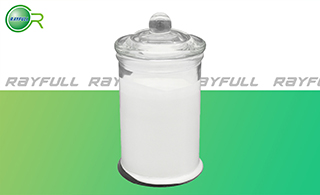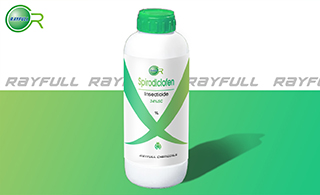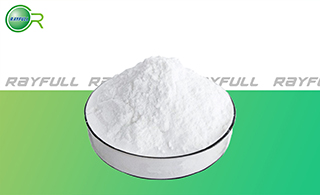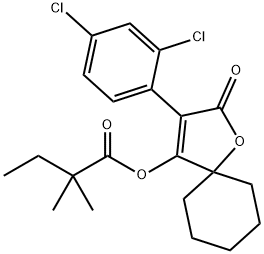Spirodiclofen
    螺螨酯 螺螨酯
Introduction: Spirodiclofen is an acaricide and insecticide used in agriculture to control mites and San Jose scale. In the United States, it is used on citrus, grapes, pome fruit, stone fruit, and tree nut crops. Spirodiclofen belongs to the tetronic acid class and acts by inhibiting lipid biosynthesis.
Common name: Spirodiclofen
Another name: CHEBI:38639; 3-(2,4-dichlorophenyl)-2-oxo-1-oxaspiro[4.5]dec -3-en-4-yl 2,2-dimethylbutanoate; Envidor; [3-(2,4-dichlorophenyl)-2-oxo-1-oxaspiro [4.5]dec-3-en-4-yl] 2,2-dimethylbutanoate; etc.
Chemical name:
3-(2,4-dichlorophenyl)-2-oxo-1-oxaspiro[4.5]dec-3-en-4-yl 2,2-dimethylbutyrate
Empirical formula: C21H24Cl2O4
Structural formula:

Mol. Weight: 411.32 g/mol
CAS No.: 148477-71-8
Specifications
Leading Spirodiclofen supplier
Spirodiclofen 95% TC
Spirodiclofen 98% TC
Spirodiclofen 34% SC
Spirodiclofen 24% SC
Packing:
BULK PACKING
Powder: 25kg/Bag, 25kg/Drum, 50kg/Drum etc.
Liquid: 200L/Drum, 20L/Drum, 10L/Drum etc.
SMALL PACKING
Powder: 1kg/Alu bag, 500g/Alu bag, 200g/Alu bag, 100g/Alu bag, 50g/Alu bag, 15g/Alu bag etc.
Liquid: 5L/Drum, 1L/Bottle, 500ml/Bottle, 250ml/Bottle, 100ml/Bottle, 50ml/Bottle etc.
Customerized packing label
Spirodiclofen FAO standard
Professional registration
HAZARDS IDENTIFICATION
Hazard statement(s)
H317 (100%): May cause an allergic skin reaction.
H351 (67.14%): Suspected of causing cancer.
H400 (65.71%): Very toxic to aquatic life.
H410 (65.71%): Very toxic to aquatic life with long lasting effects.
Precautionary statement(s)
P201: Obtain special instructions before use.
P202: Do not handle until all safety precautions have been read and understood.
P261: Avoid breathing dust/fume/gas/mist/vapors/spray.
P272: Contaminated work clothing should not be allowed out of the workplace.
P273: Avoid release to the environment.
P280: Wear protective gloves/protective clothing/eye protection/face protection.
P281: Use personal protective equipment as required.
P302+P352: IF ON SKIN: wash with plenty of water.
P308+P313: IF exposed or concerned: Get medical advice/attention.
P321: Specific treatment (see ... on this label).
P333+P313: IF SKIN irritation or rash occurs: Get medical advice/attention.
P363: Wash contaminated clothing before reuse.
P391: Collect spillage.
P405: Store locked up.
P501: Dispose of contents/container to.
Supplemental Hazard Statements: none.
MAMMALIAN TOXICOLOGY
Acute toxicity: 1) Acute oral LD50 for rats is >2500 mg/kg. 2) Acute dermal LD50 for rats is >2000 mg/kg. 3) Acute inhalation toxicity LC50 (4 h) for rats is >5.03 mg/L. 4) Skin irritation: Non-irritating to skin (rabbits). 5) Eye irritation: Non-irritating to eyes (rabbits). 6) Skin sensitization for guinea pig: Sensitizing (maximization test).
NOEL: (2 y) for rats is 4.1 mg/kg/day; (1 y) for dogs is 1.4 mg/kg/day. Other Not genotoxic. No evidence of developmental neurotoxicity.
ADI (JMPR) 0-0.01 mg/kg b.w. [2009]
Classification:
WHO Classification: NL (Not listed)
EC Risk Classification: Carcinogen category 3: R40; Xn - Harmful: R43
US EPA Classification (formulation): No consensus across products or no products available.
ECOTOXICOLOGY
Effect on birds: Acute oral LD50 (8 d) for Bobwhite quail is >2000 mg/kg. Effect on fish: Acute LC50 (96 h) for Rainbow trout is >0.035 mg/l. Effects on aquatic invertebrates: Acute EC50 (48 h) for Daphnia magna is >0.051 mg/l. Effects on algae: Acute 72 hour EC50 for Pseudokirchneriella subcapitata is >0.06 mg/l. Effects on bees: Contact acute 48 hour LD50 is >200 μg/bee, oral acute 48 hour LD50 is >196 μg/bee. Effects on earthworms: Acute 14 day LC50 is >1000 mg/kg.
ENVIRONMENTAL FATE
If released to air, a vapor pressure of 5.29×10-9 mm Hg at 20℃indicates spirodiclofen will exist solely in the particulate phase in the atmosphere. Particulate-phase spirodiclofen will be removed from the atmosphere by wet or dry deposition. Spirodiclofen adsorbs UV at a maximum wavelength of 201 nm, therefore it is not expected to be susceptible to direct photolysis by sunlight. If released to soil, spirodiclofen is expected to be immobile based upon a Koc range of 31,037 to 298,000. Volatilization from moist soil surfaces is not expected to be an important fate process based upon an estimated Henry's Law constant of 5.7×10-8 atm-cu m/mole. Spirodiclofen may not volatilize from dry soil surfaces based upon its vapor pressure. Metabolism studies conducted in soil incubated at 20℃ resulted in spirodiclofen half-lives ranging from 10.0 to 63.9 days suggesting that biodegradation is an important environmental fate process in soil. If released into water, spirodiclofen is expected to adsorb to suspended solids and sediment based upon the Koc. The aerobic aquatic half-life ranges from 1-7 days, suggesting that biodegradation is an important environmental fate process. Volatilization from water surfaces is not expected to be an important fate process based upon this compound's estimated Henry's Law constant.
Usage: Spirodiclofen was under development by Bayer AG. It is a foliar applied acaricide active against a range of sucking insects on fruit and nuts.
Application: Mode of action Interferes with mite development. Uses Under development for control of mite pests such as Panonychus spp., Phyllocoptruta spp., Brevipalpus spp., and Aculus and Tetranychus species, at 50-200 g/1000 L. For use in citrus, pome fruit, stone fruit, grapes and nuts.
| 






